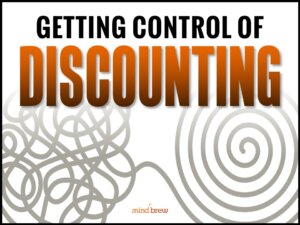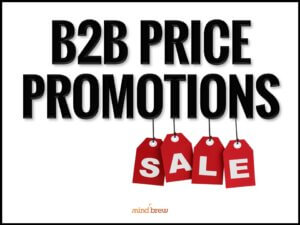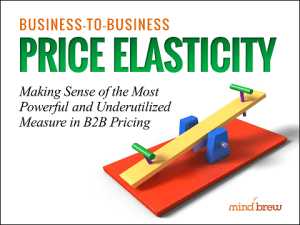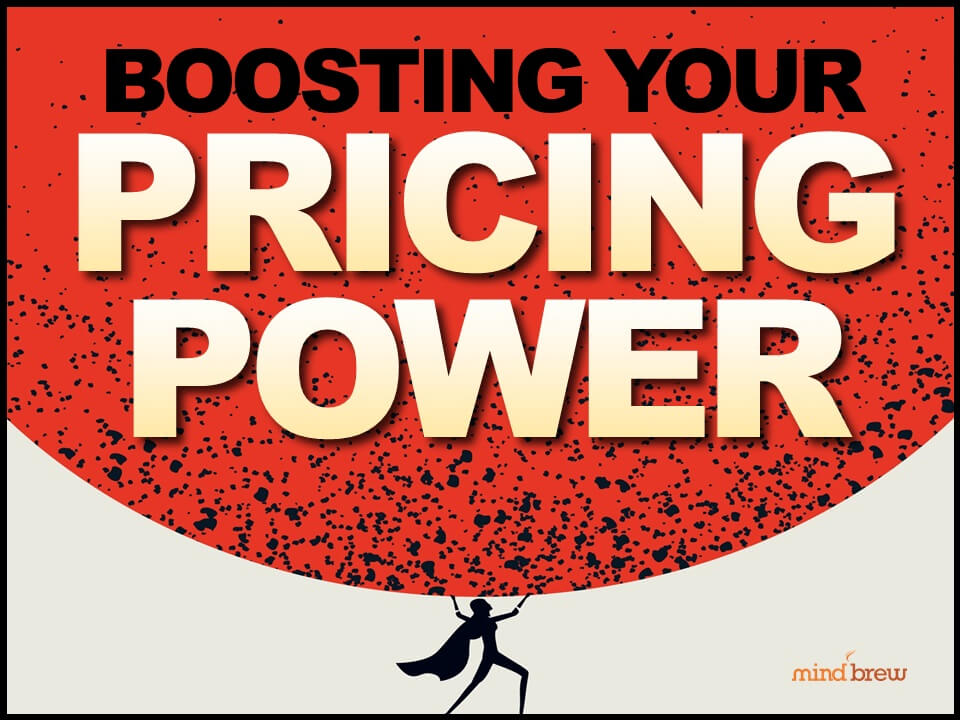As a consumer, you’ve probably experienced the power of discounting. Maybe you tried a new type of frozen pizza because you had a coupon. Maybe you like to scoop up all the extra Halloween candy at 70% off during the first week of November. Maybe you religiously go back to spend your Kohl’s cash. Or maybe you have a bot that alerts you every time the price drops on airline tickets to Arizona.
The point is, we’re all familiar with discounts from our personal experiences. So we assume that they will work the same way for B2B customers.
Unfortunately, that’s not true.
B2B customers often aren’t motivated by price in the same way that consumers are. They are looking for value for their budget dollars. And they have set purchasing cycles.
In the B2B world, we see two different approaches to discounts, and they have two very different results:
- Reactive discounts are usually a knee-jerk response to a change in market conditions. For example
- When a customer says that they are considering a competing product, a salesperson might offer a discount to get them to stay loyal. That decision might have the intended short-term effect. But over the long term, it can erode the perceived value of your product, and it sets a precedent for future negotiations that will eat into your margins.
- Near the end of the quarter, your sales team might realize that they have not met their quotas. So they have a fire sale to get some revenue on the books right away. Again, this approach might accomplish the intended goal, but at the expense of profitability.
- If one of your competitors drops their prices, your sales team might think that you need to do the same in order to remain competitive. But the drop in prices could actually signal a weakness in the competition. And if you drop your prices, you could start a price war that ultimately harms the entire industry.
- Strategic discounts, on the other hand, are pre-planned, data-driven decisions that use discounts to accomplish a larger goal. Here are some examples:
- Right before you launch a new product model, you might want to offer a discount on the prior model. This is an approach that car makers and smartphone manufacturers use with good results. It clears out existing inventory while keeping interest high in your product.
- If you offer a subscription-based product, you might consider offering a discount to customers who renew in the month before their subscription expires. This helps reduce churn, ensures retention, and improves cash flow.
- If you sell multiple product or service lines, you might offer a discount on a bundle of complementary offerings. This increases the perceived value of your offering, while also increasing revenue and margin.
A reactive discount might seem like a good idea at the time, but if you don’t think it through, it might have negative implications for years to come.
That doesn’t mean you should never offer discounts though. In the right circumstances, they can be a very effective strategy. You just need to make sure that your discounting decisions are intentional and data-driven.
We have a couple of resources that can help you hone your discounting strategy. Getting Control of Discounting offers tips for adopting the right perspective, metrics, and incentives to bring discipline to your discounting structure. And Price Promotions in B2B explains how to determine whether a particular promotion strategy is likely to succeed and offers advice on how to minimize related risk.
And now if you’ll excuse me, I need to go use my BOGO burger coupon before it expires.













